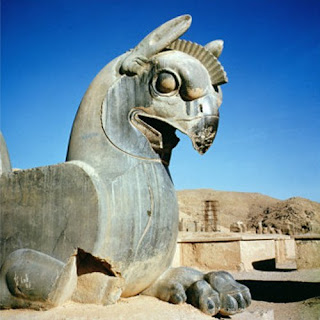Painting: starting portraiture
In which we learn about lights and darks.
When looking at the subject, whether a person to be painted or an object, there are always lights and darks. That seems simple enough to grasp; ie light comes from a source and hits on the object, thus it has a lighter side to it which is illuminated, and the other side is less well lit and so is 'dark'. The trick is to really look for these at the start of your work and make these really stand out.
However it gets more complicated, as sometimes there is 'reflected light', where light is bounced (often very subtlely) back on to the dark side from a second light source; this is easy to miss.
All of this is easy until one comes to try and do the painting!
We start by doing a very speedy rough sketch of our model, on some coloured cheap paper, (which gives a little bit of background depth or ground) & then, using some chalk crayons on the side, draw in the lights and darks. These are almost scribbled on to the page in an apparently childlike way, to map out where we hope to go.
This is Hannah!
I should have mentioned that we use a restricted colour palette, of 2 lights (pale pink and lemon yellow)
and 2 darks (blue and sienna).
This is really helpful as it simplifies matters a lot; always good when starting out on a new idea.
As you can see, where there is a dark (eg the blue background), it meets a light (side of the face); likewise the light background (lemon) meets a dark back of hair. The hair also has lights and darks within it. This meeting of lights and darks is a rule that nearly always applies.
Self portrait by Picasso
Rembrandt Self Portrait
Moving on from crayon to paint, we were asked to do a self portrait, once again restricting our palette to 2 lights and 2 darks. In this case I used white and lemon yellow for my lights and blue and umber for my darks. Since I didn't happen to have a little mirror with me in class, imagine!
I did this work using a fellow student. Meet Sarah my obliging model.
I found this quite tricky to analyse as there are several 'lights' meeting around the top of her head, including light from the window and an area to the left of this, also light, and her hair at the top of her head is also highly lit.
This is my attempt, done in a bit of a hurry it must be admitted!! And so she is missing quite a bit of forehead.... however this class was not about accuracy, more about light and dark. I tried to resolve the lights issue by using different light paints, so lemon yellow meets white in the background (top area) and I use more yellow where the top of her head meets the window area.
Its difficult to see in the photo but there is a tiny amount of extra light where the side of her face meets the yellow background and here I have used a bit of extra white which appears as a gray line along the edge of her forehead.
The top of her left hand shoulder is well lit, and parts of her skin eg chin, back of neck, parts of her skin below the neck, while other areas are in shadow, for instance jawline, inner socket of the eye and the shade her jacket casts on her skin. Her hair is a medley of light and shade!
I must say I really enjoy working with these four colours.







Comments
Post a Comment